HOW ARE CHILDREN IN GAZA BEING DENIED LIFESAVING AID?
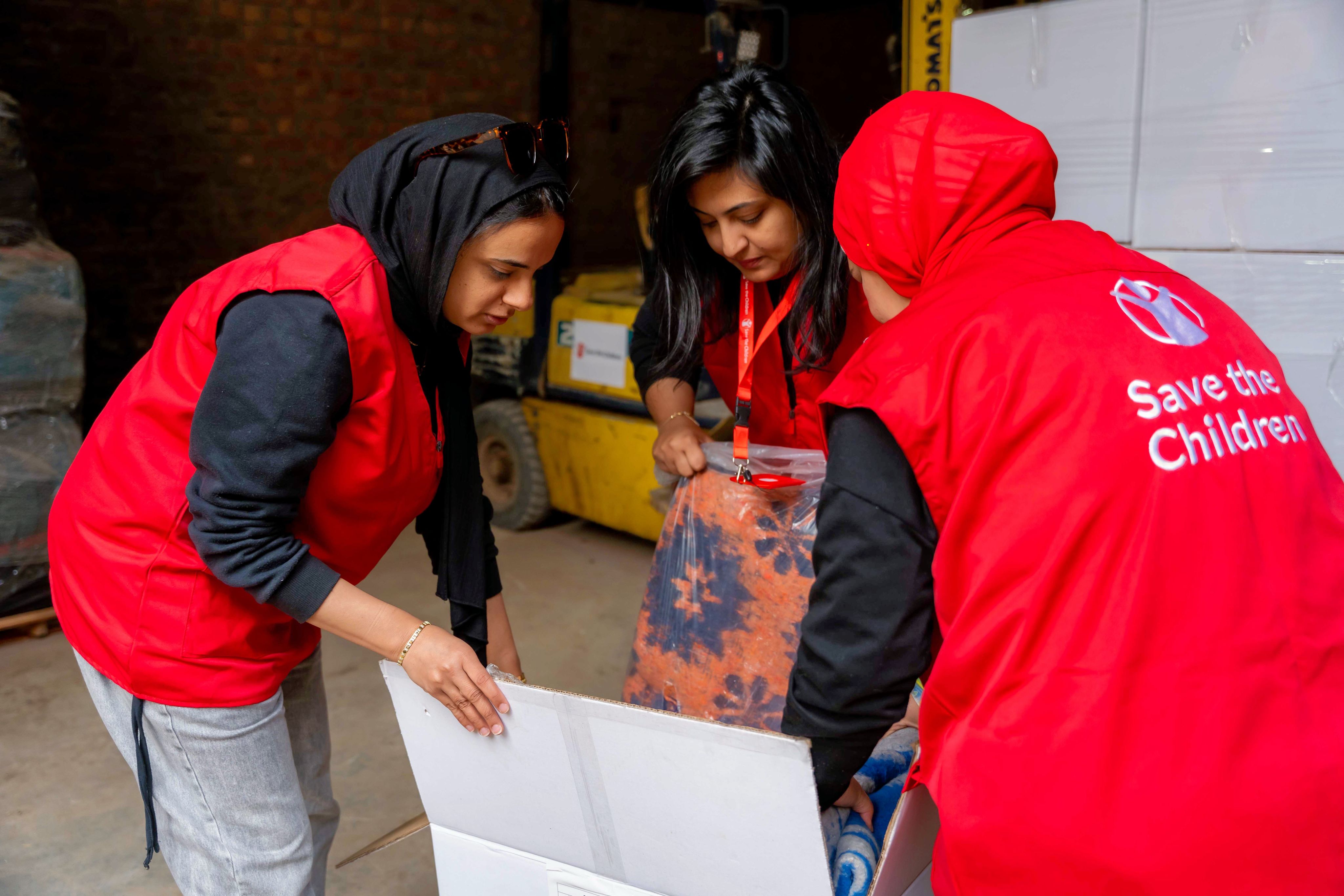
Since October 2023, Save the Children has been calling for a definitive ceasefire and improved humanitarian access in Gaza to stop the war on children.
We need a #CeasefireNOW. The international community must do all within its power to improve humanitarian access. Israeli authorities must #OpenUpGaza.
While we are pushing for a ceasefire and improved access, we are doing everything we can to provide essential food, water, and medicine to families in need.
Your donation will help us to keep delivering lifesaving support and be ready to scale up our operations further, as soon as we are able to safely do so.
Keep scrolling to learn how lifesaving aid is being denied in Gaza and what this means for children.
What is humanitarian access?
Humanitarian access means children and families can get the aid and essential supplies and services they need, wherever they are.
This works two ways – humanitarians need to be able to deliver aid and families must be able to receive it – safely and quickly, without obstructions.
Humanitarian aid is a right under international law. Denying the delivery of aid is a crime and a grave violation against children.
Is aid getting to children in Gaza?
The movement of lifesaving supplies
The 17-year land, air, and sea blockade on Gaza meant that even before the war, families struggled to access the basics they needed to survive and aid delivery was hugely restricted.
Before October 2023, 80% of the population was already reliant on aid. Israeli authorities were in full control of the movement of all supplies and people coming in and out of Gaza. They were also in control of the supply of critical services, such as water and electricity. Humanitarian organisations had to co-ordinate with authorities to bring aid in, which was a lengthy, complex and unpredictable process.
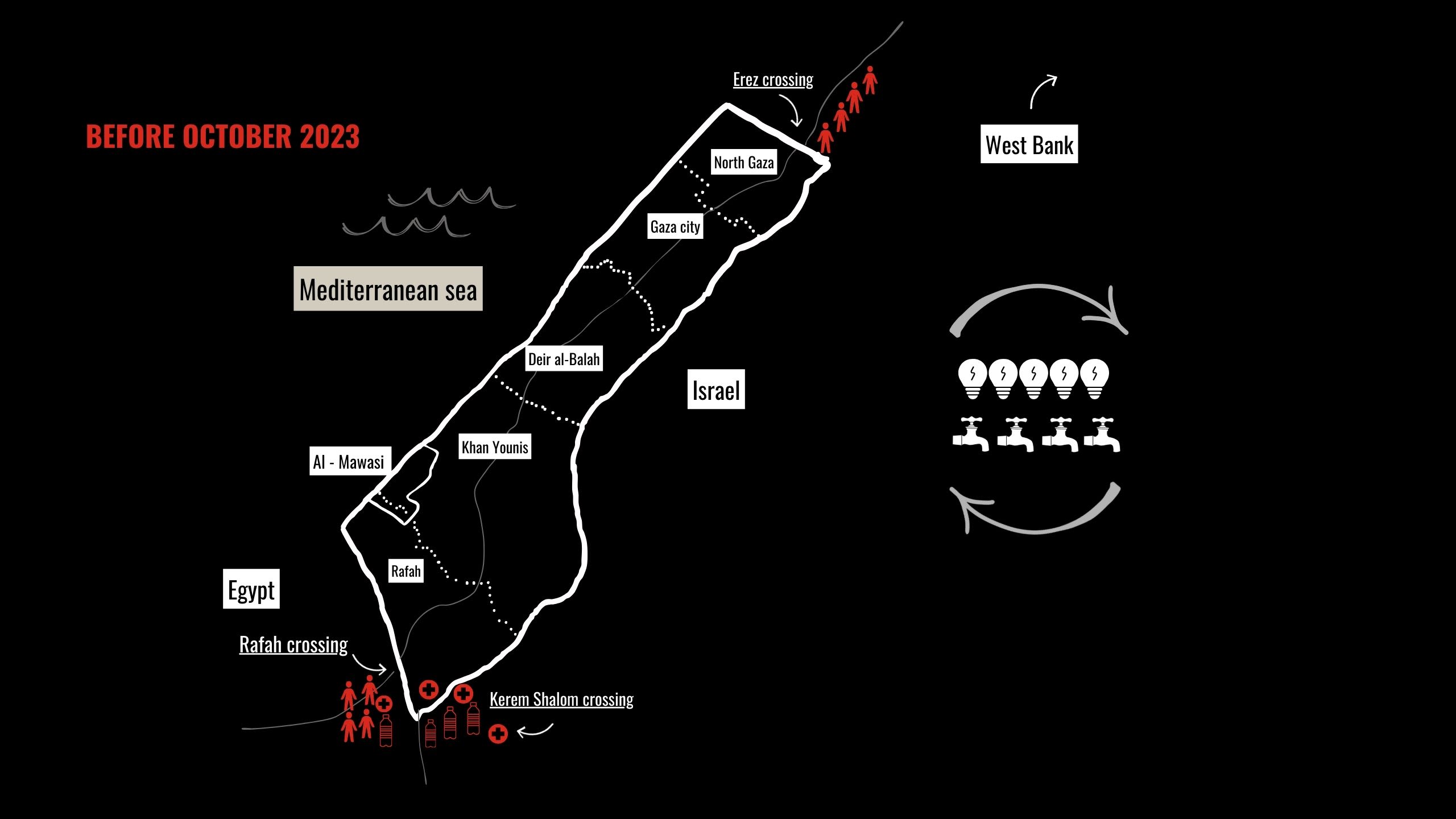
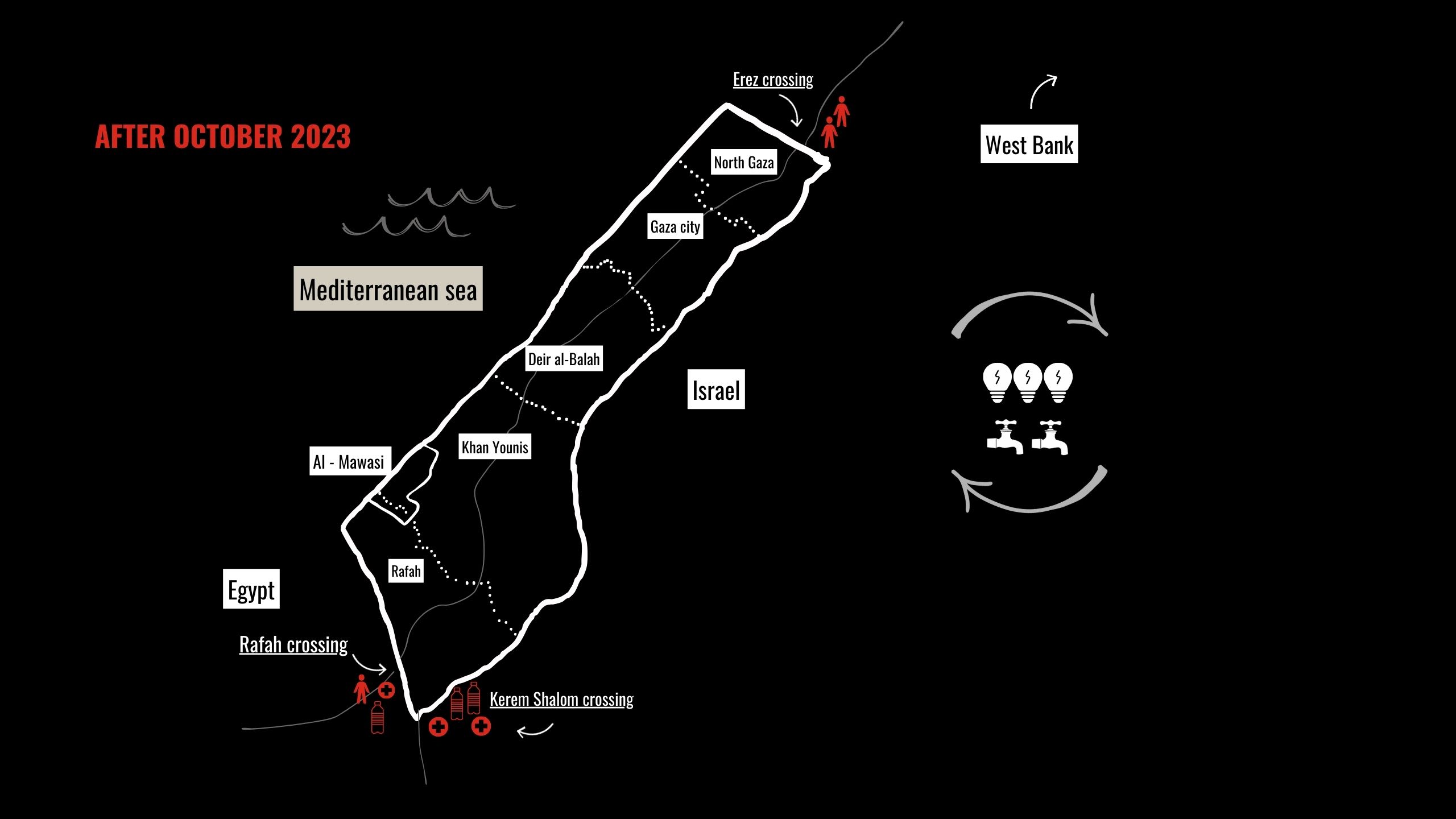
Since the war broke out in October, needs have soared – with 100% of the population now reliant on aid to survive. Israeli authorities remain in full control of the movement of aid and goods and the supply of critical services. Yet, despite soaring needs, these have plummeted.
By looking at the number of trucks carrying aid and basic commodities that are being authorised to enter Gaza each month, it is clear that the flow of lifesaving supplies is being strangled at a time when families need them most.
As of May, the total monthly number of trucks carrying lifesaving supplies into Gaza has decreased by more than half, since before the war.
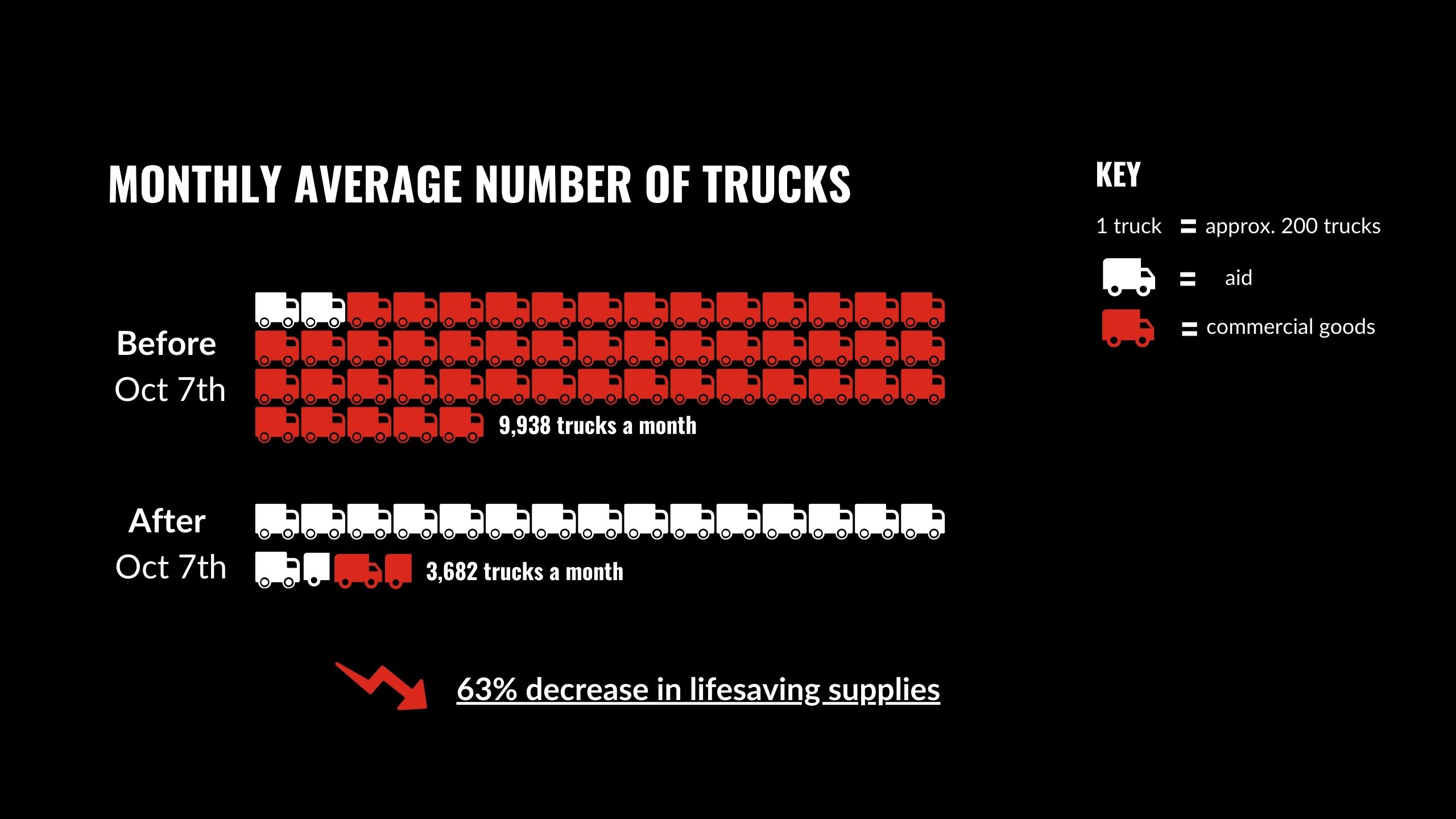
However, the number of trucks entering Gaza does not provide the full picture.
The focus should be on whether aid is actually getting to children and meeting their needs.
By looking beyond the number of trucks, we see that not only is there not enough aid getting in, but it's becoming increasingly impossible for families to safely reach it.
The news reports don’t do justice to how bad the needs are and how bad the situation is for people in Gaza at the moment. There’s an unbelievable level of need and desperation amongst people."
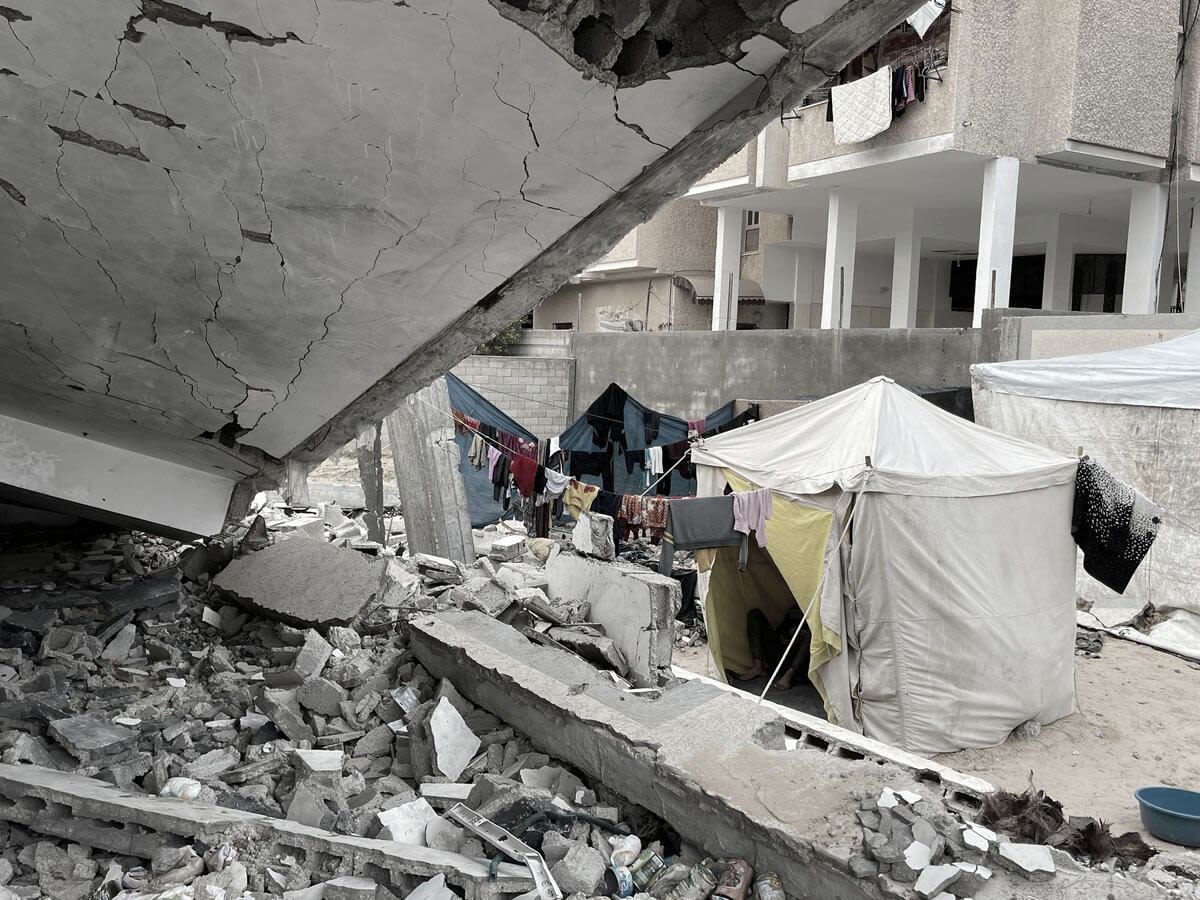
Nine ways aid has been disrupted since the war broke out in October 2023
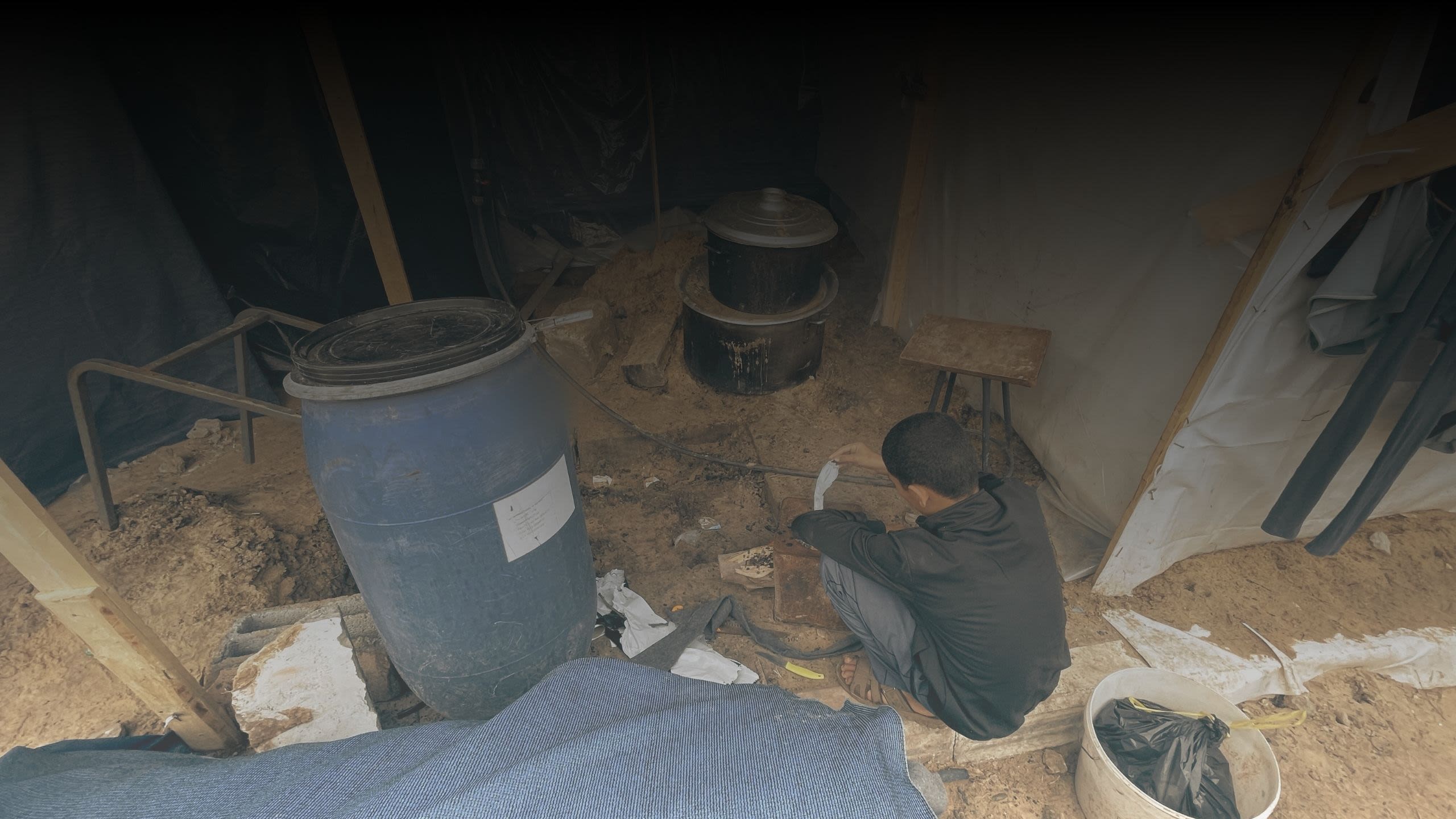
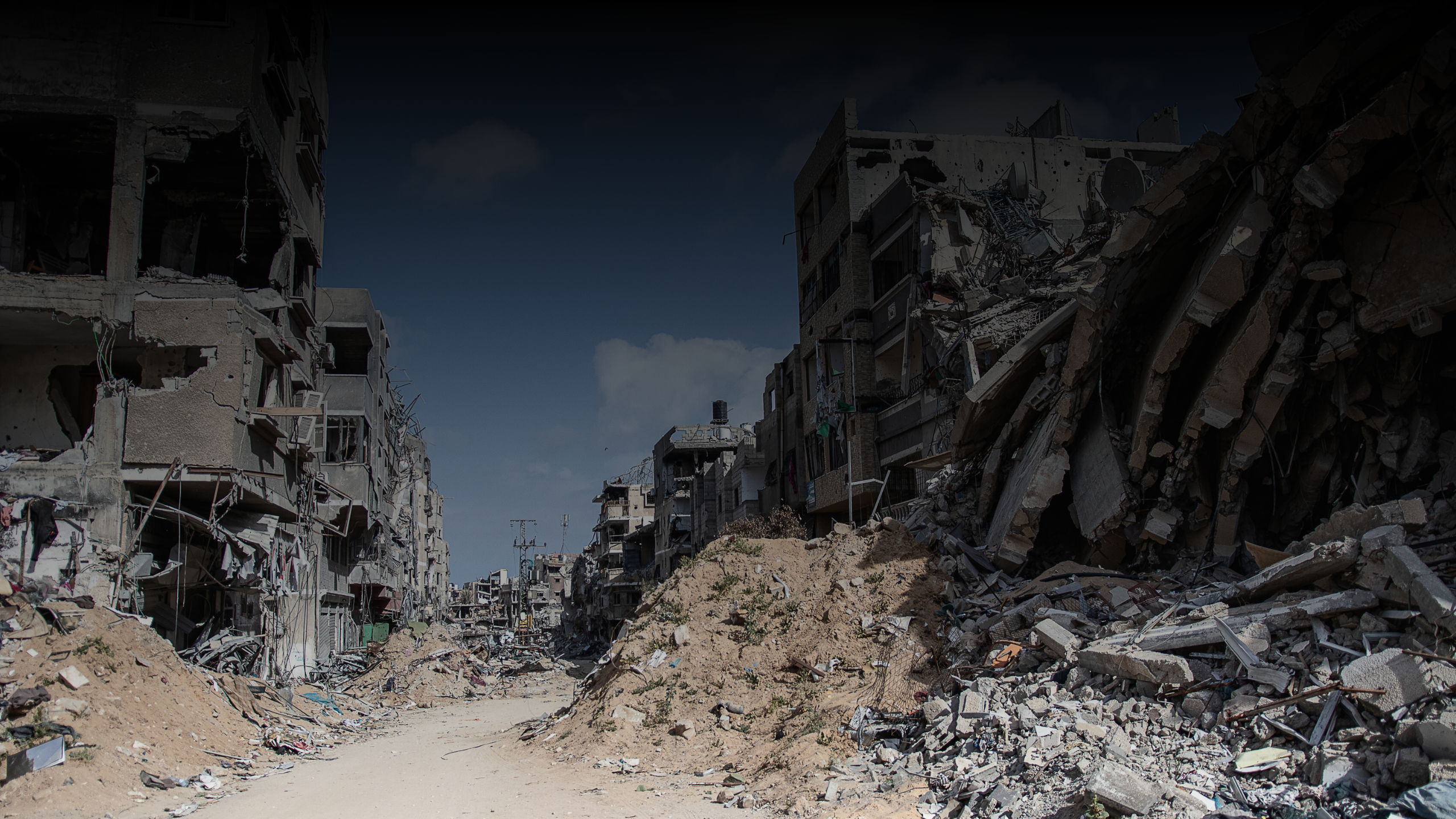
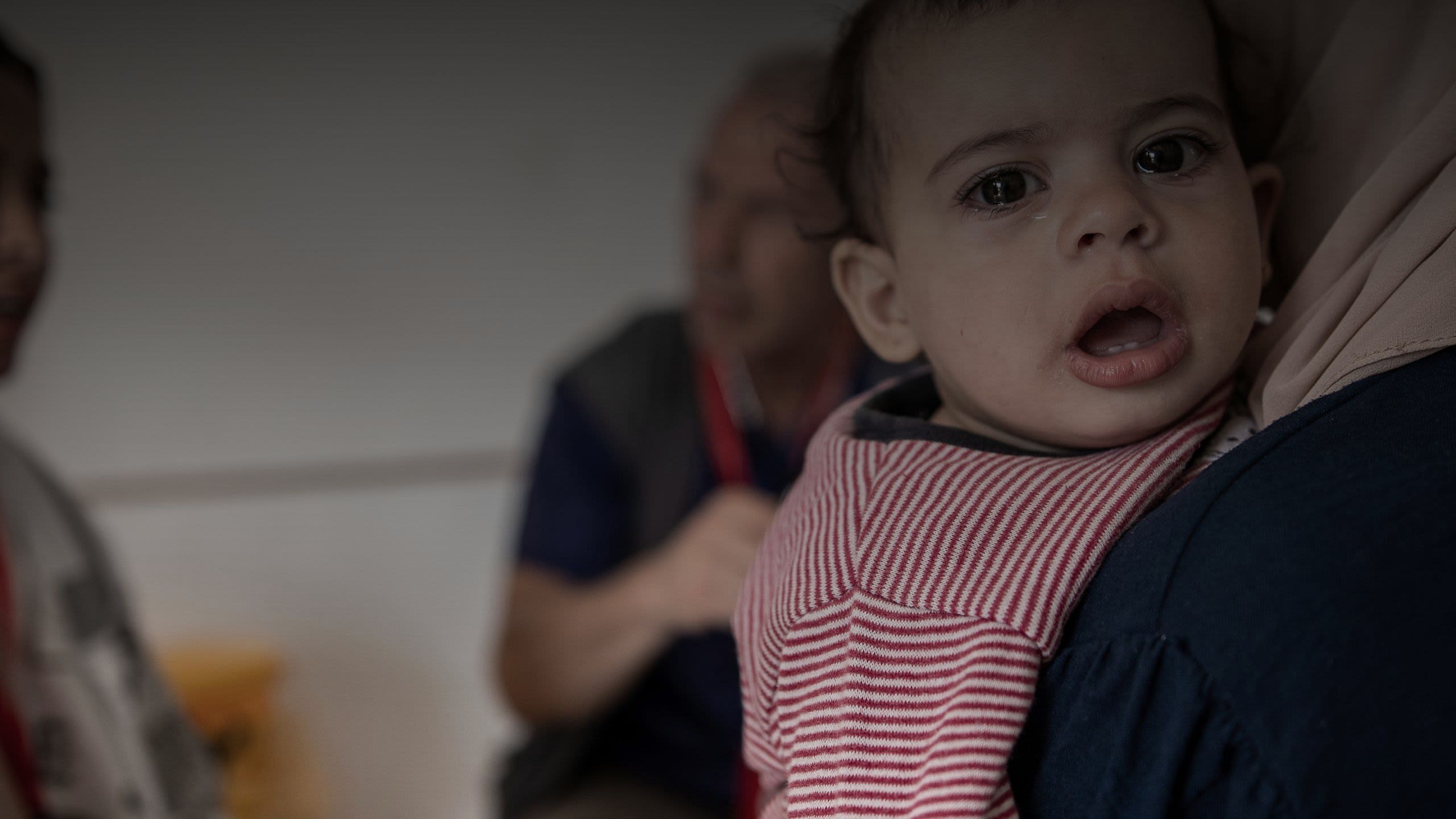
1. Border crossings remain closed or partially functioning
Different border crossings have opened and closed since October, but it remains the case that the volume and pace of aid entering is falling far short of humanitarian needs.
2. Lifesaving items are being denied entry even where borders are open
These include power generators, solar panels, water purifiers, and medical equipment
3. Protesters have blocked aid from entering Gaza
Trucks carrying aid and drivers have been obstructed and attacked by Israeli protestors at Gaza border crossings and in the West Bank. Sometimes these protests have lasted for multiple days.
4. A breakdown of public order and safety in Gaza
Active fighting has impacted public order in Gaza, triggering insecurity and dangerous conditions. This creates additional challenges for humanitarian agencies in collecting the aid that does manage to cross into Gaza.
5. Bombs, unexploded ordnance and damaged roads are deadly and impassable obstacles
The remnants of the bombardment in Gaza are making it nearly impossible to physically reach some of the most vulnerable people with the aid they desperately need.
6. Communication blackouts and fuel shortages
These are causing daily disruptions to the co-ordination and delivery of aid and essential services, like hospitals.
7. Hundreds of aid workers have been killed and facilities attacked
Aid convoys, offices, and warehouses have come under attack again and again, despite Israeli authorities being aware of their locations and movement.
8. Multiple relocation orders are leaving people with nowhere safe to go
These orders have not only repeatedly uprooted families, but also humanitarian workers and facilities. NGOs are forced to abandon their operations to relocate again and again, while families are being forced to unsafe areas, cut off from aid.
9. Schools and hospitals are being consistently attacked
Nearly every single school building – many of which are also being used as shelters, run by humanitarian agencies - has been damaged or destroyed. The rate of attacks on healthcare is also higher in Gaza than in any other conflict since 2018. Schools and hospitals must never be used as battlegrounds.
What does this mean for children in Gaza?
Children are dying without aid and lifesaving supplies. Blocking aid means depriving Palestinian children of the absolute basics they need to survive – food, water, medicine, shelter. Every child in Gaza is at risk of death from malnutrition and disease right now.
It also means children are being denied the support need to prevent long-lasting physical and mental harm.
Rami* (7) and his father Jamal* (35) both suffered blast injuries in Gaza. Photo: Sacha Myers / Save the Children
Rami* (7) and his father Jamal* (35) both suffered blast injuries in Gaza. Photo: Sacha Myers / Save the Children
Without adequate humanitarian access, there is no adequate humanitarian response. Save the Children is doing everything possible to help families get through this.
But to give children all the support they need right now, Israeli authorities must let aid into Gaza – without obstruction – and give humanitarian workers guaranteed safety.
Humanitarian efforts are hindered not by our distribution failures, but by restrictions deemed unlawful that we shouldn’t be forced to navigate. The risks our colleagues face in Gaza are unacceptable.
It’s unconscionable that life-saving food, nutritional products and medical supplies are sitting at the border, just miles away from where children are needlessly and painfully dying from malnutrition.”
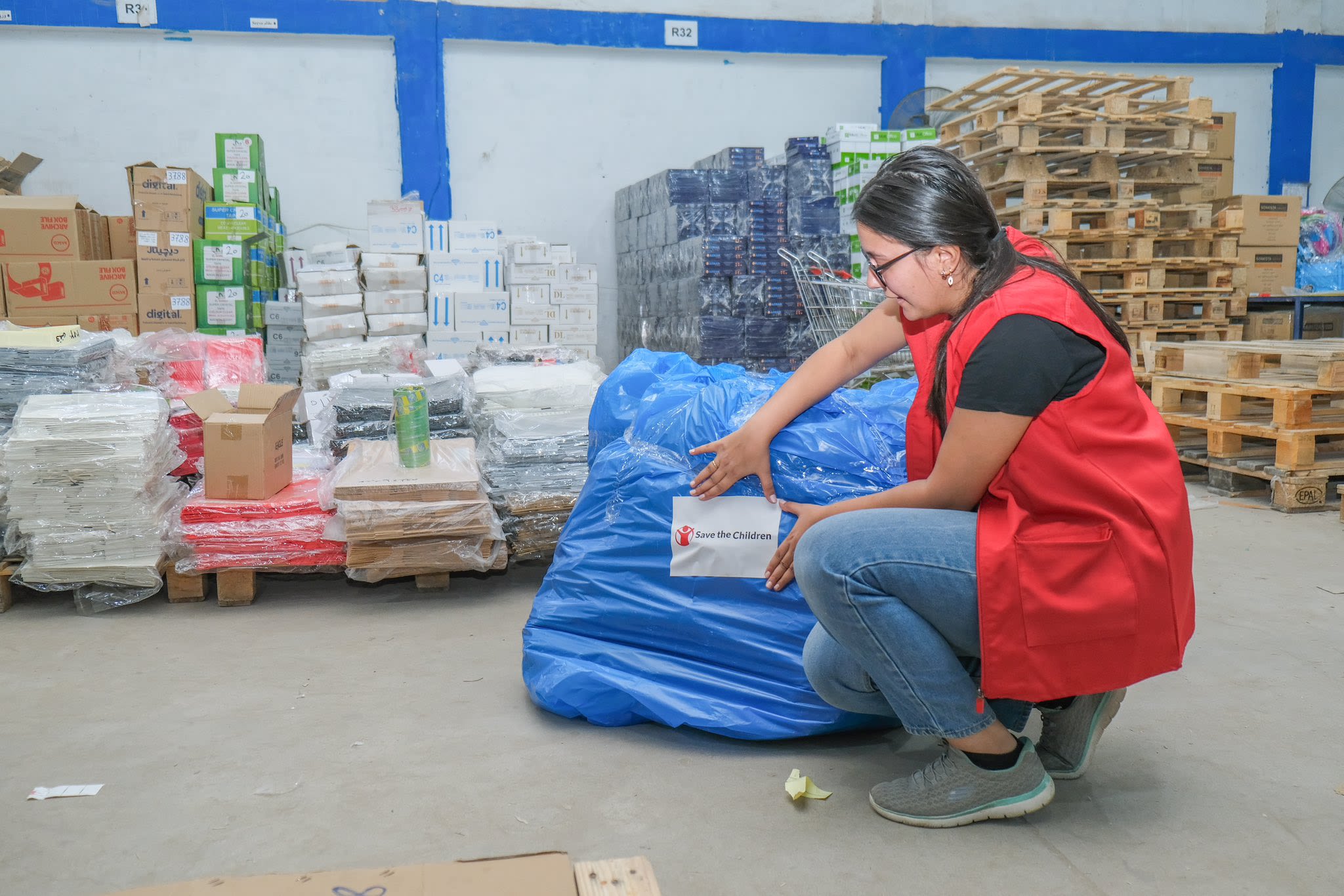
A timeline of events since October 2023
Aid has been blocked, delayed, attacked, and denied numerous times since October.
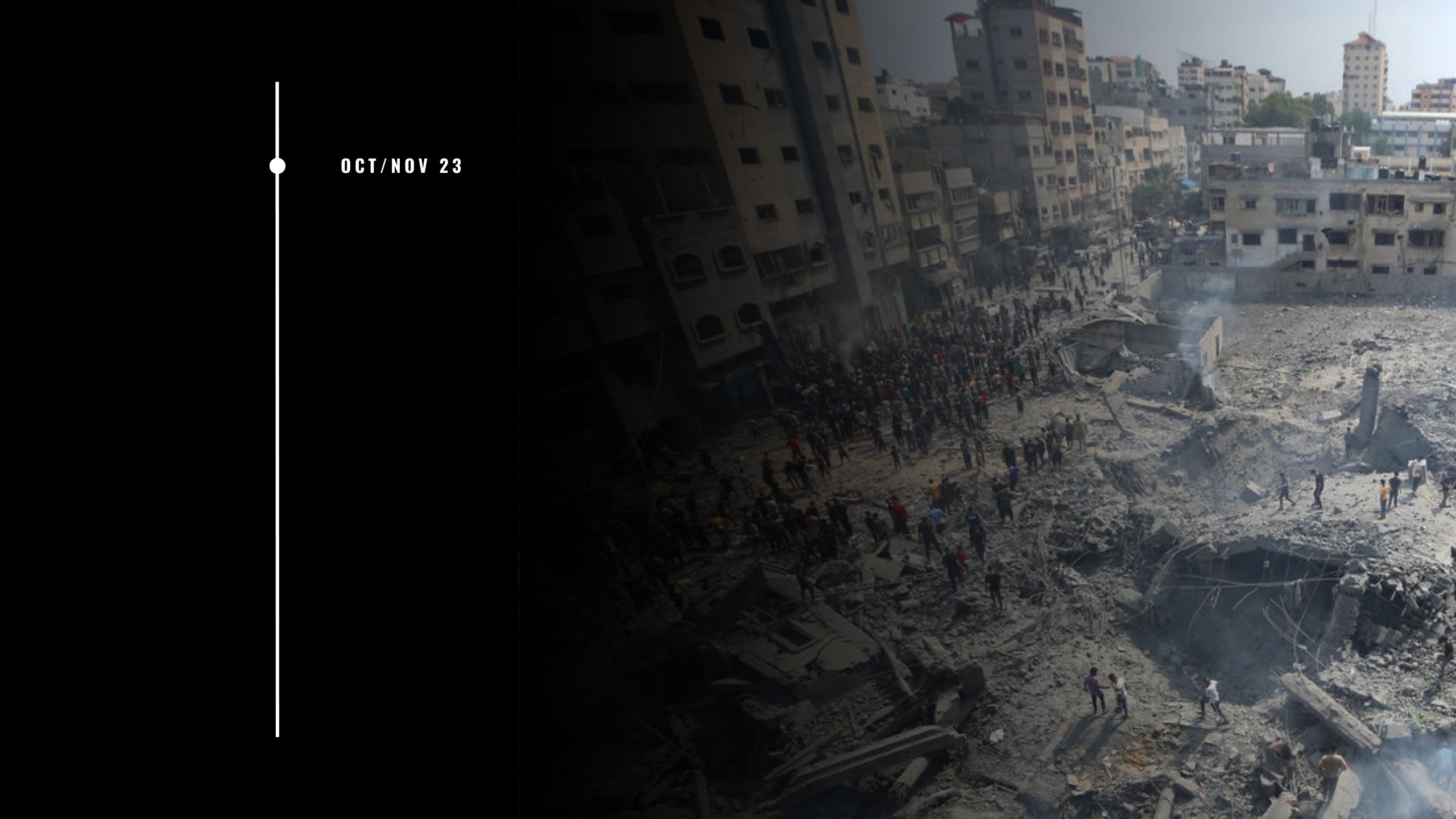
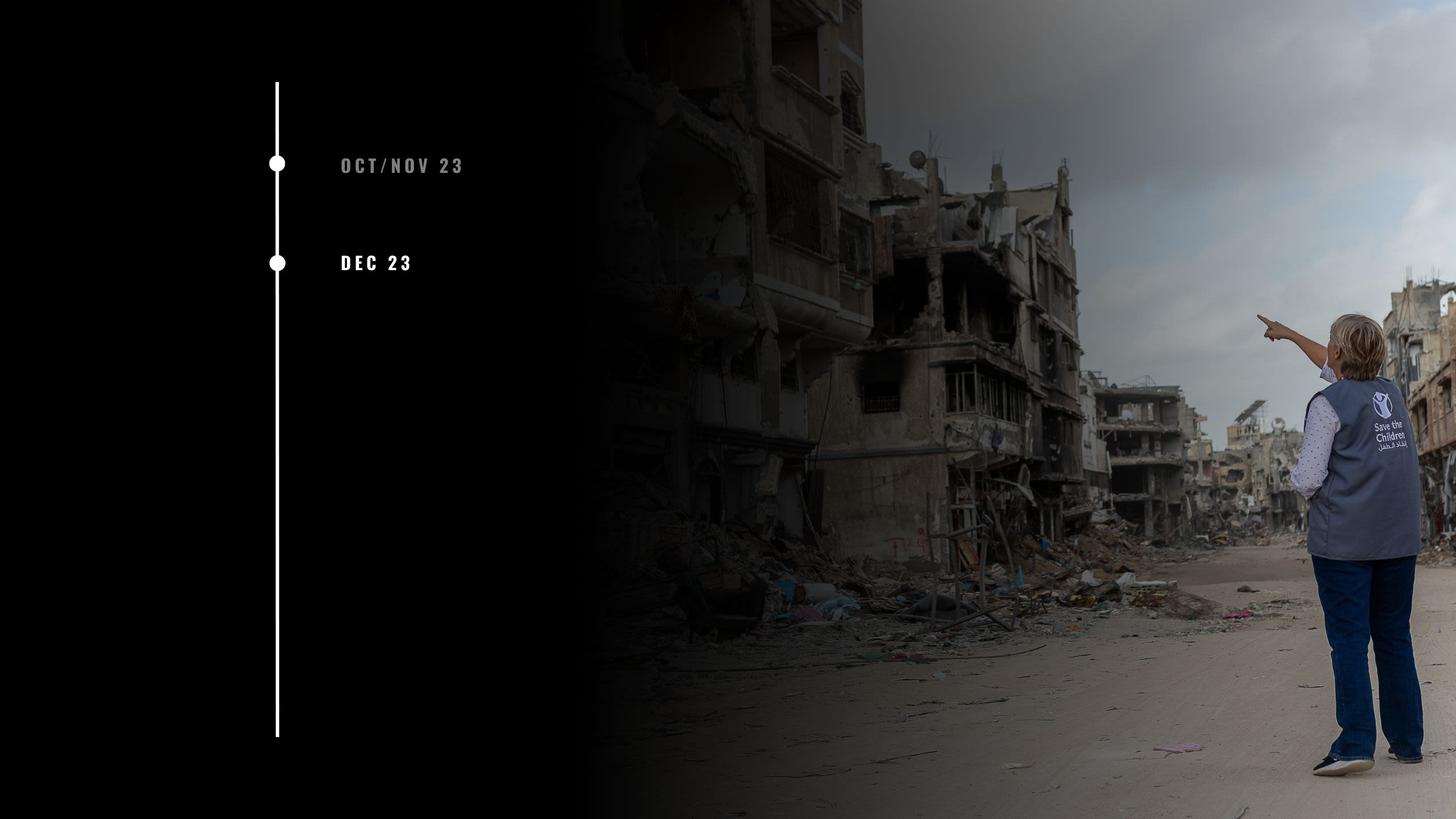
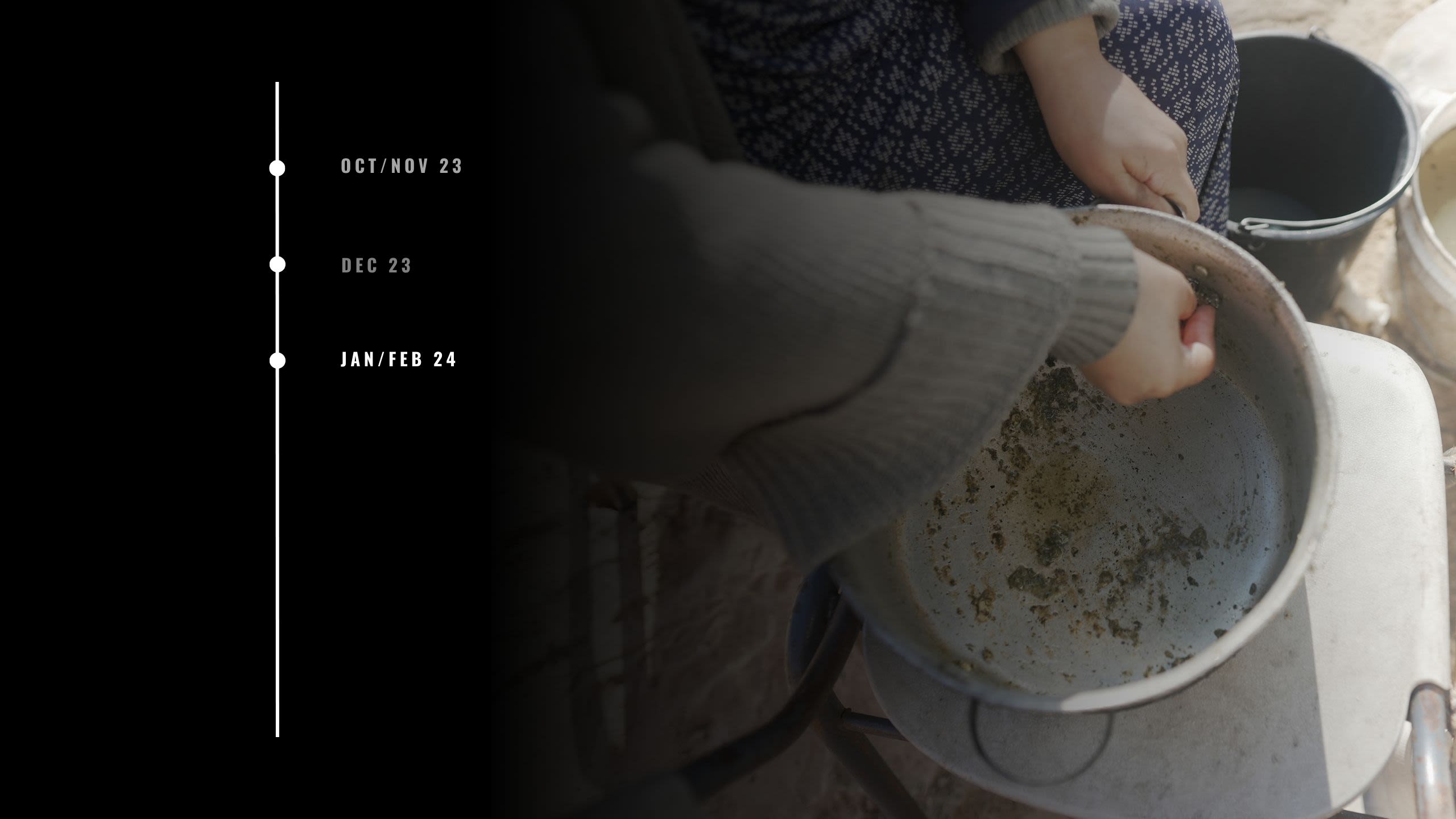
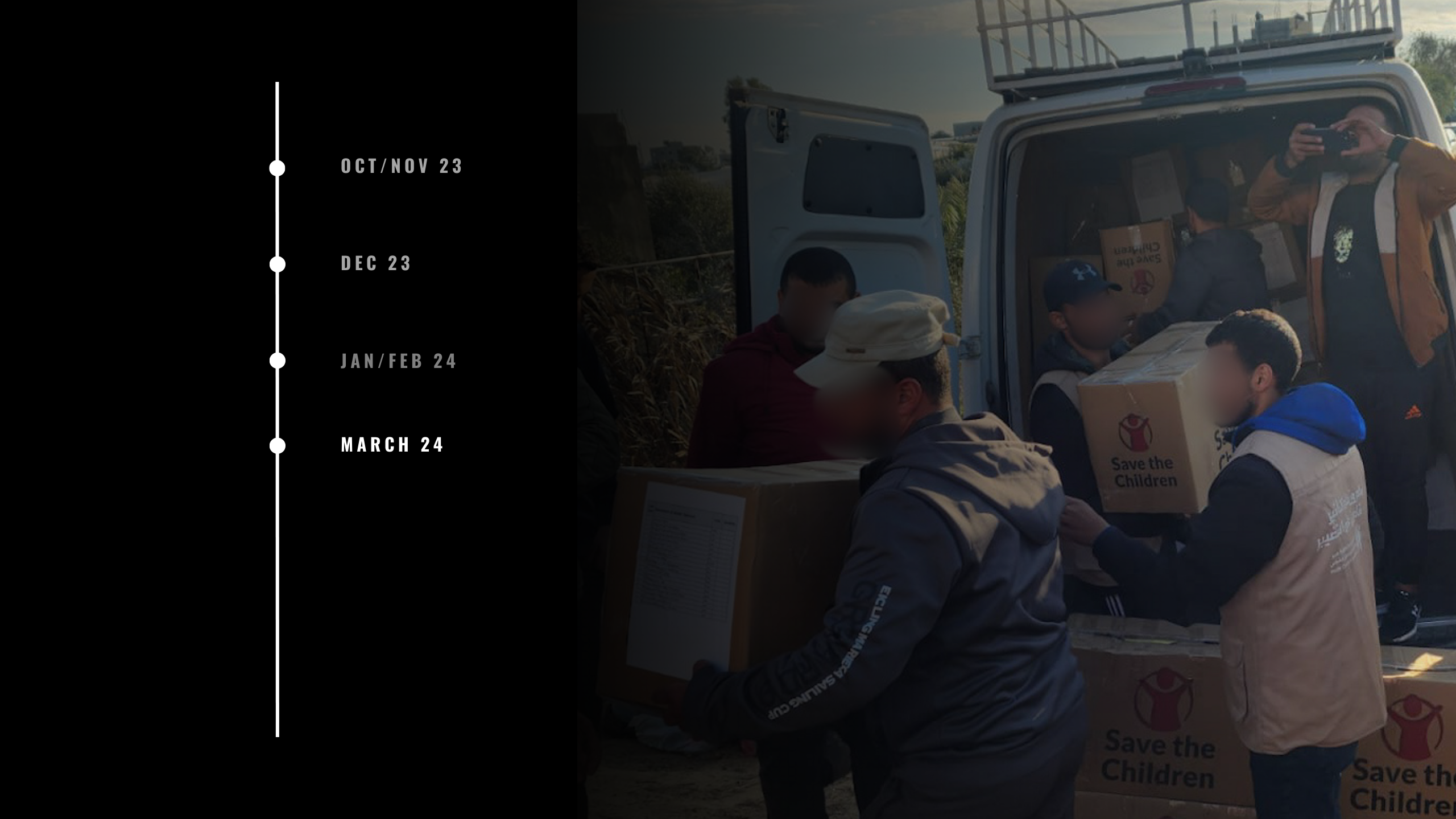
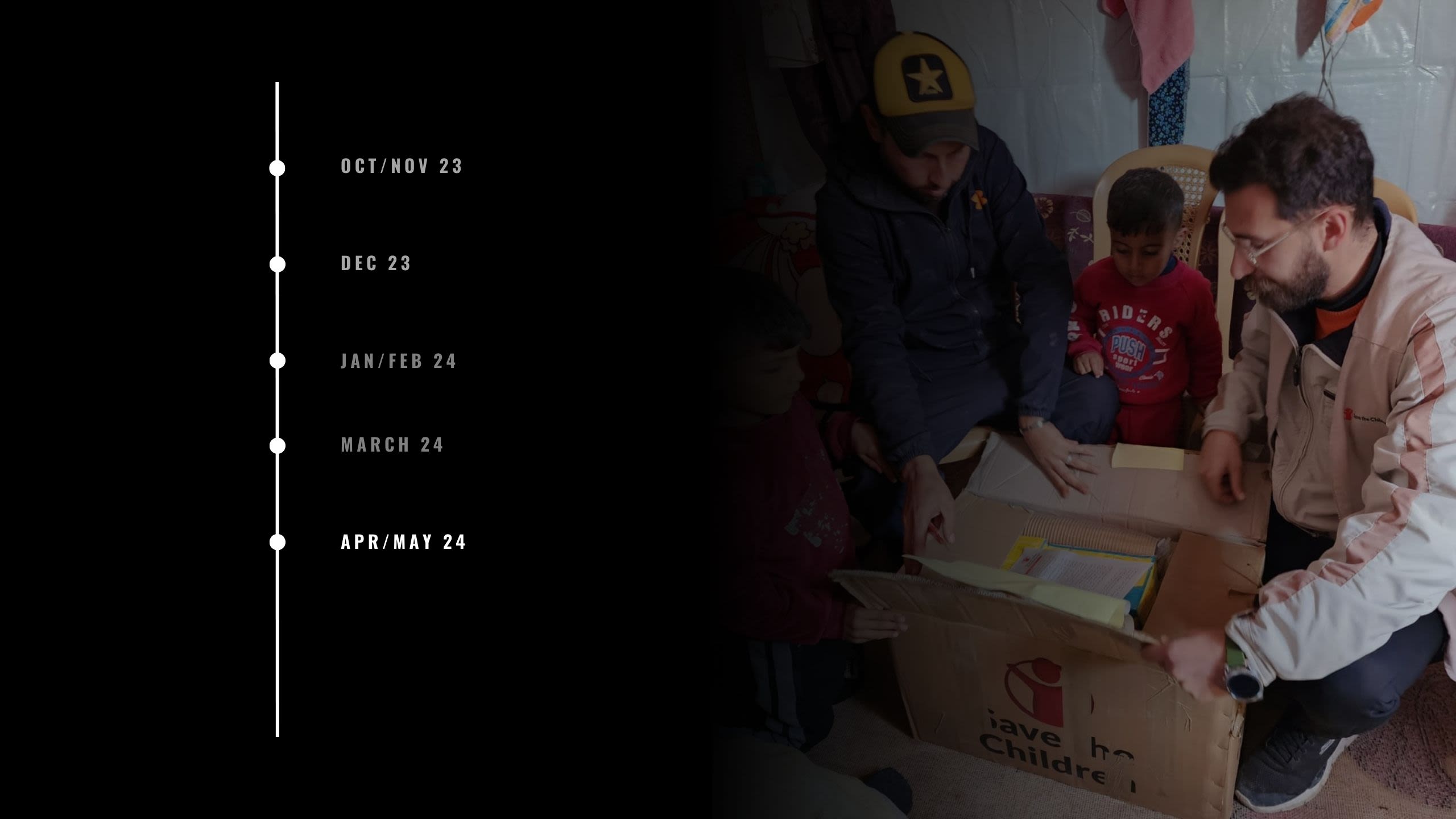
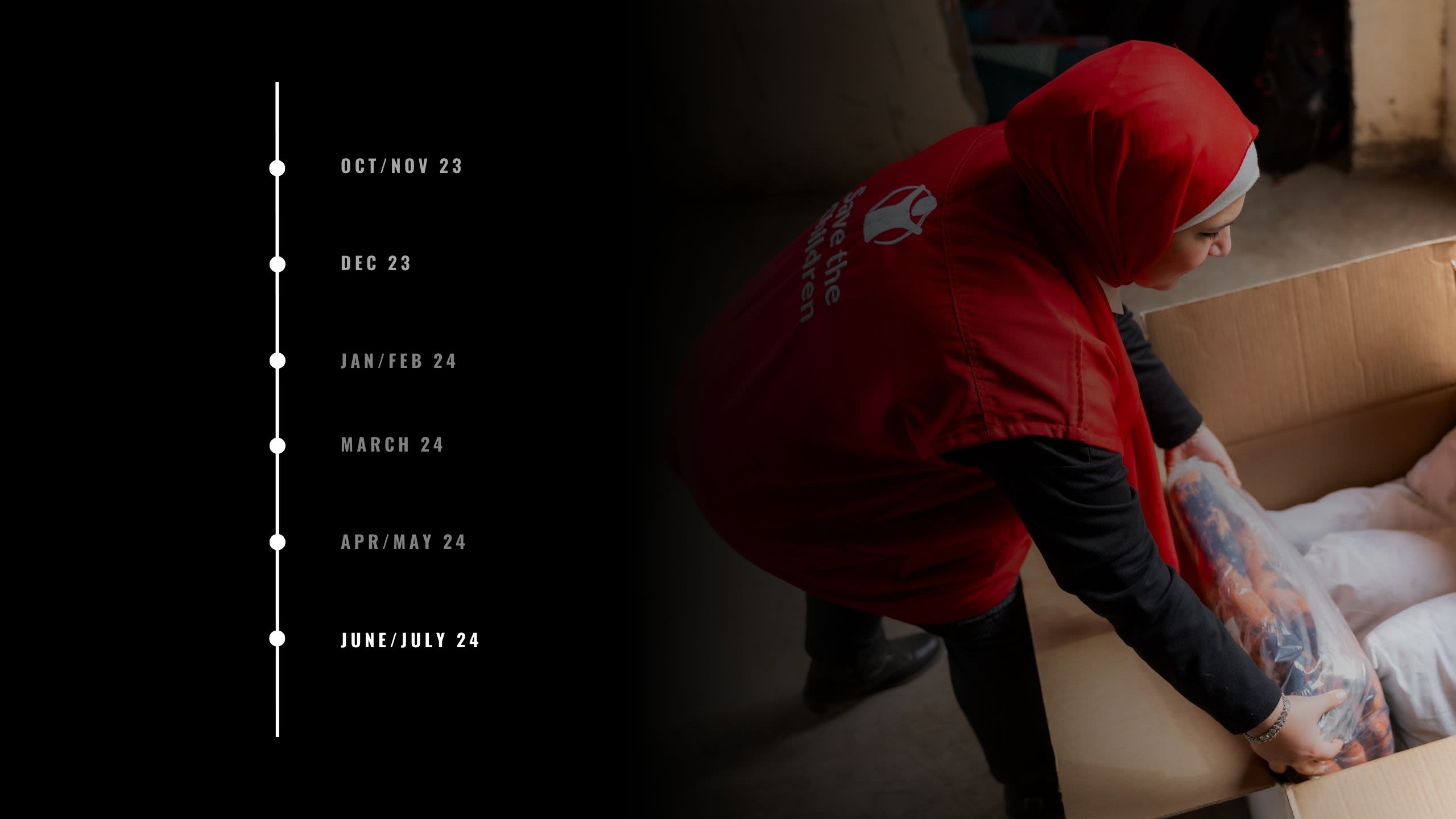
Following the 7th October attacks on Israel by Palestinian armed groups, in which around 1,200 people were killed and more than 240 taken hostage, the Government of Israel declare a “complete siege” of Gaza on 11th October, cutting civilians off from basics needed to survive. Two weeks pass before the first aid delivery enters Gaza.
By the beginning of November, there has been 3 communications blackouts in 10 days and Save the Children teams and partners are forced to plan how aid can be delivered without fuel – rather than where aid is most needed.
The first fuel delivery arrives on 15th November. The same day, the siege on Gaza’s largest hospital, Al-Shifa begins.
Only 10% of necessary food supplies have entered Gaza since October.
By 1st December, the war resumes after a seven-day pause in fighting and within six days a famine warning is issued. Save the Children’s much-loved colleague, Sameh, and his family are killed by an Israeli airstrike on 11th December. The conflict has already broken records by this point as the deadliest for the killing of UN and humanitarian staff.
The UN Security Council passes a legally binding agreement demanding all parties open all available routes and facilitate the immediate delivery of aid. On 17th December, Karem Abu Salem/Kerem Shalom border crossing opens for the first time, but is not able to deal with the level of aid required to meet needs.
A week-long communications blackout in January grinds aid distributions to a halt once more. On 26th January, the International Court of Justice – the highest court in the world - orders Israel to prevent genocide.
The same day, accusations arise of the involvement of UNWRA staff in the 7th October attacks. An investigation is launched, staff are fired and international donors suspend funding.
Reports are emerging of children dying from a lack of food while aid is blocked. On 29th February more than 100 people are killed and 750 injured while queuing for food aid.
The total death toll in Gaza passes 30,000.
At the beginning of March, the US Government deliver the first airdrops of aid and announces plans to build a temporary pier on Gaza’s coast to bring in aid.
Dozens of Palestinians are killed and injured by airdrops. Save the Children, alongside other humanitarian organisations say alternative methods of aid delivery are costly, inefficient, at times unsafe, and a distraction from what’s needed.
An UNRWA food distribution centre in Rafah is hit by an airstrike. Throughout March, 85% of aid trucks carrying food are denied or delayed. New analysis shows famine is projected by May.
On 18th March, a second raid on Al-Shifa hospital begins. In the last week of March, all four planned attempts to get aid to Al-Shifa hospital are blocked.
On 24th March, the Government of Israel restricts UNRWA’s access to northern Gaza. The UN Security Council demands an immediate temporary ceasefire and the International Court of Justice orders Israeli authorities to allow sufficient aid into Gaza.
On 1st April, an Israeli airstrike kills 7 international aid workers for World Central Kitchen. The Israeli authorities pledge 7 commitments to increase aid, none of which are fulfilled.
At the beginning of May, after 6 weeks of negotiations and planning and 3 disrupted attempts, a Save the Children shipment of food parcels arrive in northern Gaza.
On 6th May, Israeli forces takeover Rafah border crossing and prevent aid from entering. Save the Children are forced to relocate their office from Rafah to Deir Al Balah. Meanwhile, protestors are blocking aid headed for Gaza.
After a number of temporary closures due to bad weather, the first aid shipment is delivered through the temporary pier. Yet on 22nd May, the US Department of Defence suggest aid delivered via the pier is not reaching Palestinians.
By the end of May, the number of aid workers killed has reached 270. The amount of aid entering Gaza has decreased by 67% compared to April.
On 8th June, the military operation in Nuseirat Refugee Camp to take 4 Israeli hostages home, kills and injures nearly 1,000 Palestinians.
2 days later, the UN Security Council calls for a full and immediate ceasefire, a significant scale up of aid, and the release of hostages. The same day, fighting destroys a logistics and fuel base used by humanitarian organisations.
The temporary pier closes and reopens 6 times in June due to damages from high seas, until its permanent dismantling is announced in July.
On 19th June, independent human rights investigators conclude Israeli authorities have weaponised aid for strategic and political gains. Within a week, new analysis shows 96% of the population are facing acute food shortages.
In July, Save the Children tries to order a solar panel for power, but the import is denied and it is unavailable in the local market.
We also have 17 pallets of temperature-controlled medicines stuck in Al-Arish, Egypt, including four boxes that require continuous refrigeration. These supplies are repeatedly rejected due to restrictions imposed on the type of truck required to keep them cool enough.
“In the last few weeks, it has been even more difficult to get aid into Gaza. In July, there were still some stocks in warehouses but in August the situation got even more difficult. More things are stopped at the border, there are searches at the border...our stocks in the warehouse are now down to almost zero.”
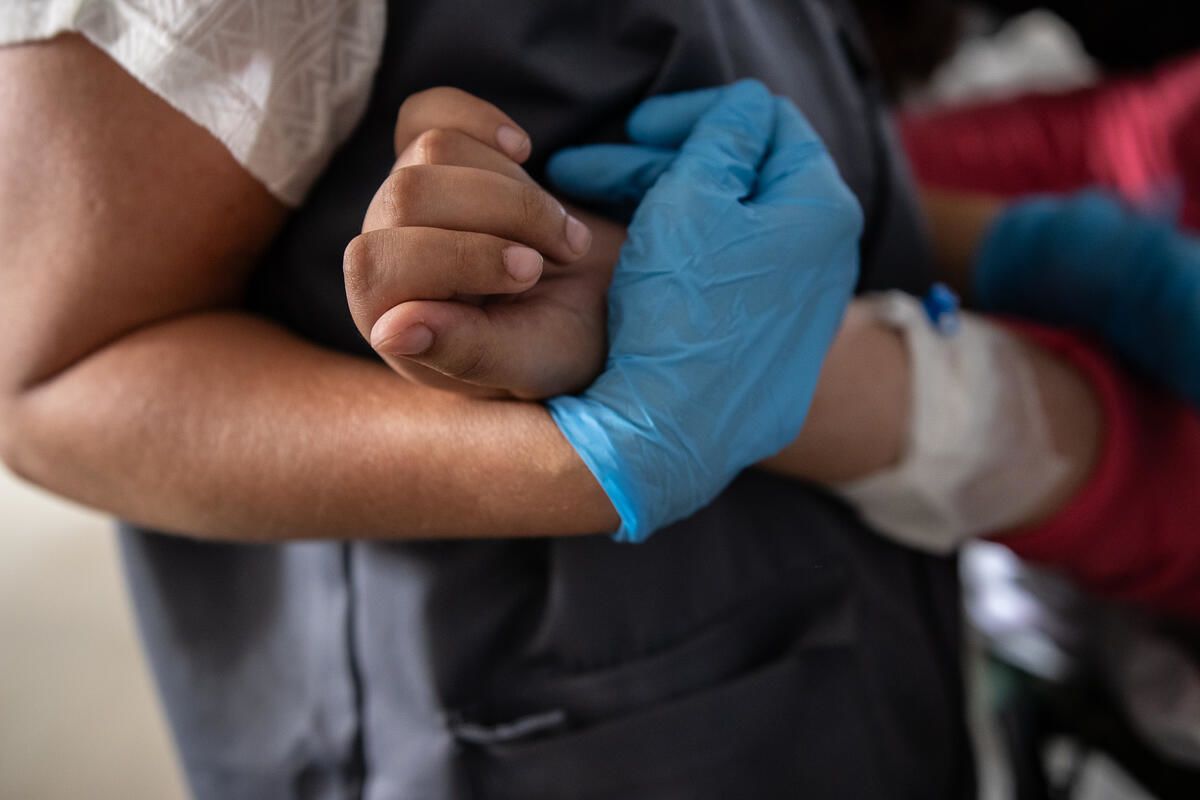
Israeli authorities have consistently and systematically failed to ensure life-saving goods and services are reaching a population whose rights are protected under International Humanitarian Law, who are at risk of irreparable harm and who are on the brink of famine.
They must #OpenUpGaza and the international community must do everything in its power to hold them to account.
Starvation must never be used as a weapon of war.
Denying aid is a crime.
Denying services needed for survival is a crime.
Save the Children is calling for a #CeasefireNOW and for Israeli authorities to #OpenUpGaza.
As a humanitarian worker, it’s not uncommon to respond to emergencies in active conflict zones. But everything about this humanitarian response has been exceptionally challenging."


